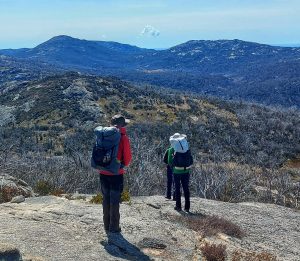
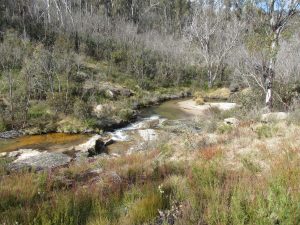
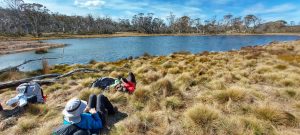
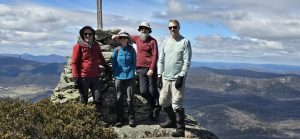
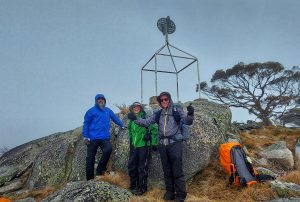
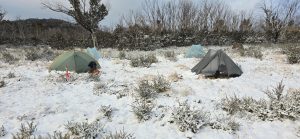






At the start of 2021 Canberra Bushwalking Club held a challenging and interesting activity for members – a river-crossing training exercise. Held in the clear waters of the Cotter River, 26 club members attended keen to learn how to cross rivers safely.
The training was recommended for leaders and anyone contemplating walking in New Zealand or Tasmania. The course covered teaching participants how to assess a river, identify the safest crossing place and solo and team crossing techniques. Participants practiced these techniques in water up to thigh deep and also had the opportunity to practice swimming with a pack.
The day was highly successful with all participants agreeing that the course helped them to learn these essential life-saving skills. Watch more here to learn more about river safety.
Canberra Bushwalking Club was founded in 1961 and currently has over 400 members. While the Club’s main activity is bushwalking it also offers canoeing, canyoning, caving, conservation work parties, cross-country skiing, cycling, geocaching, liloing and social activities. Check out the Club’s Facebook page to see more.
Features of the Canberra Bushwalking Club include:
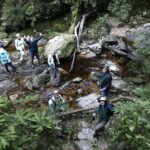
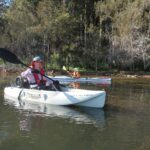
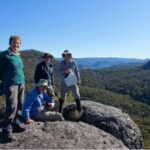
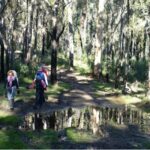
By Phil Meade, Sutherland Bushwalking Club
Fifty years ago, on 14 November 1970, nine members of Sydney Bush Ramblers (renamed Sutherland Bushwalking Club in 1977) placed a visitors’ logbook on the top of the 1132m Currockbilly Mountain, in the south west Budawang Ranges (east of Braidwood). The logbook, still remarkably intact in its metal container, had been rediscovered earlier in 2020 after the devastating bushfires, by David Poland from the Canberra Bushwalking Club.
David, having seen the name Sydney Bush Ramblers in the first logbook entry, contacted Shaune Walsh, our president and invited the club to join a small COVID-safe group to celebrate this 50-year anniversary. The plan was for four from SBC (Shaune, Ken Newman, Tony Larkin and Phil Meade) to meet on Saturday morning 14 November 2020 with a group from the Canberra Bushwalking Club for addresses later that day by David and Shaune to commemorate the anniversary at the top of Currockbilly Mountain.
David Poland also circulated to Shaune, the notes sent to Canberra Bushwalking Club members, providing details of the proposed walk. These notes included the following:
“What to expect.
This is an “R” or ROUGH walk. Whilst not long in distance (8 km return) please don’t be fooled. This walk does involve a 400 m elevation climb and descent. In parts it is very steep. Most of it is off track, ie there is no path or animal track to follow at all. It takes me 2.5 hrs to walk the 4 km up and another 2 hrs to walk down plus an hour to explore on the summit. So, for some people this will be a long day. Whilst the scrub is light, as most of it was burnt in the 2019/2020 fires, there is a lot of loose rock underfoot. You will need to be sure footed. You will need to expect to get sooty and black from the burnt sharp sticks and legs so wear old tough clothes. There is no water.”
After an overnight stay in Braidwood, with the above in mind we set off from the cars past Mongarlowe at 9.00am, with a short rest mid-way, reaching a point very close to the top in 2.5 hours after the 400m ascent. We then diverged a short distance south to an overgrown stone mound trig. Here David carefully opened a small metal container left at the trig, inside of which were details of people having visited there dating from the 1960s including the famous Colin Watson OAM. The records were very fragile and a decision was made that David should deliver the container, including contents, to the National Museum in Canberra. Something suitable will be put there in its place.
At midday David made a short address providing some background to the walk. An invited botanist also explained some of the key features of the area, including a nearby temperate forest, which he said was unique to the area.
Shaune’s address followed and included:
Shaune, in closing, thanked David Poland and his club for organising the celebration.
After the ceremonies, we looked through the logbook and noted the following names (in the order in the log), from 14 November 1970: J Stevens “I carried the cement!!!”, L Watters, R Stewart, Don Rice, Don Mercer, Ewan M Lawson, Neil W Barclay, Laurie Braithwaite and Ross McKenney. The logbook entry records their intended route: “Sawmill – Currockbilly – The Sugarloaf – Yadboro Creek -Wog Wog – Cockpit Swamp”.
Some 300m north of the area, where the logbook has been placed, there’s a lookout. It’s well worth visiting as it provides spectacular views to the north and east, including views to Bibbenluke Mountain, Mt Owen, The Castle and Pigeon House.
We left Currockbilly Mountain retracing our route taken earlier that day (yes – it was rough and steep) to where Shaune had left his car; we returned to Sydney that night.
I very much appreciate and I know I also echo the sentiments of Ken and Tony, the time and effort Shaune put into organising the club’s participation in the day and we appreciate the opportunity to take part in this historic event.
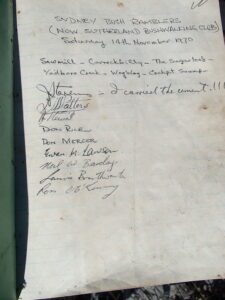
Currockbilly Mountain Visitors Logbook 1970

Shaune 50th anniversary logbook celebration talk
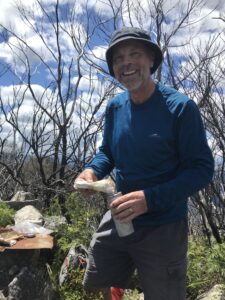
Currockbilly Trig logbook from 1964 with David Poland
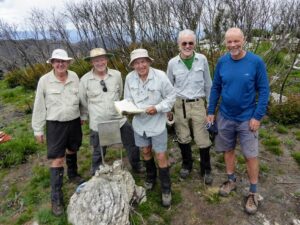
Tony, Ken, Shaune, Phil – SBC and David Poland – CBC with 1970 Currockbilly Logbook
NSW and the ACT are currently experiencing the remarkable difference that one effective bushwalker can make.
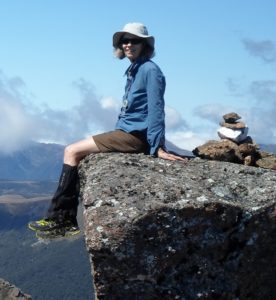
I’m talking about Linda Groom, from the Canberra Bushwalking Club who is the inspiration behind the Save Kosci Protest Walk – which aims to make repeal of the Kosciuszko Wild Horse Heritage Act 2018 an issue in the March 2019 NSW election.
Linda presented her vision at the November Bushwalking NSW General Meeting, saying “this legislation so disturbed me that I simply had to do something. I’m not a very political person, but I do know how to organise a long distance bush walk.”
And this 560km walk, from the doors of the NSW Parliament in Sydney to the summit of Mt Kosciuszko, is certainly making waves across the state and in the press!
What disturbs Linda even more than those starving horses, is that this Act gives feral horses and other feral animals more rights than native animals. It gives them the right to continue damaging this unique NSW National Park, endangering a host of threatened native species, and destroying the alpine flora:

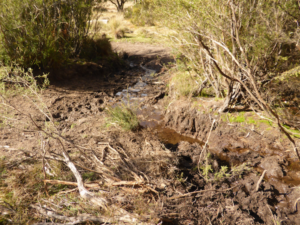
A water source at Bill Jones Hut in 2014 (left) and 2018 (right)
Bushwalkers from across NSW, the ACT and Victoria have joined Linda in taking action to call for the repeal of this Act. They are walking, organising, sharing the word, and signing the petition which is on its way to reaching the 10,000 signatures required to force the NSW Parliament to meet on the issue.
“It’s a Park not a Paddock!” is the battle cry of the protestors, and you can join them:
See the impact the walk is having with walkers meeting MPs and collecting signatures from across the state:
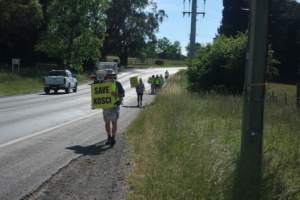
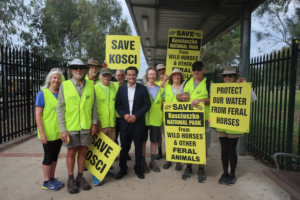
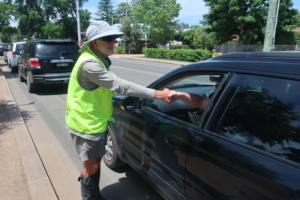
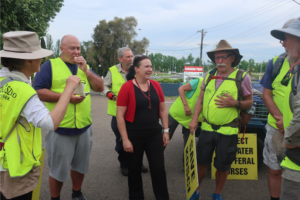

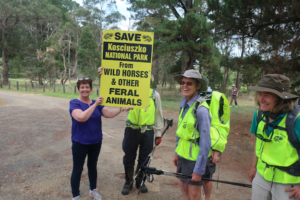
Photo credits: Linda Groom and the Save Kosci Walkers
